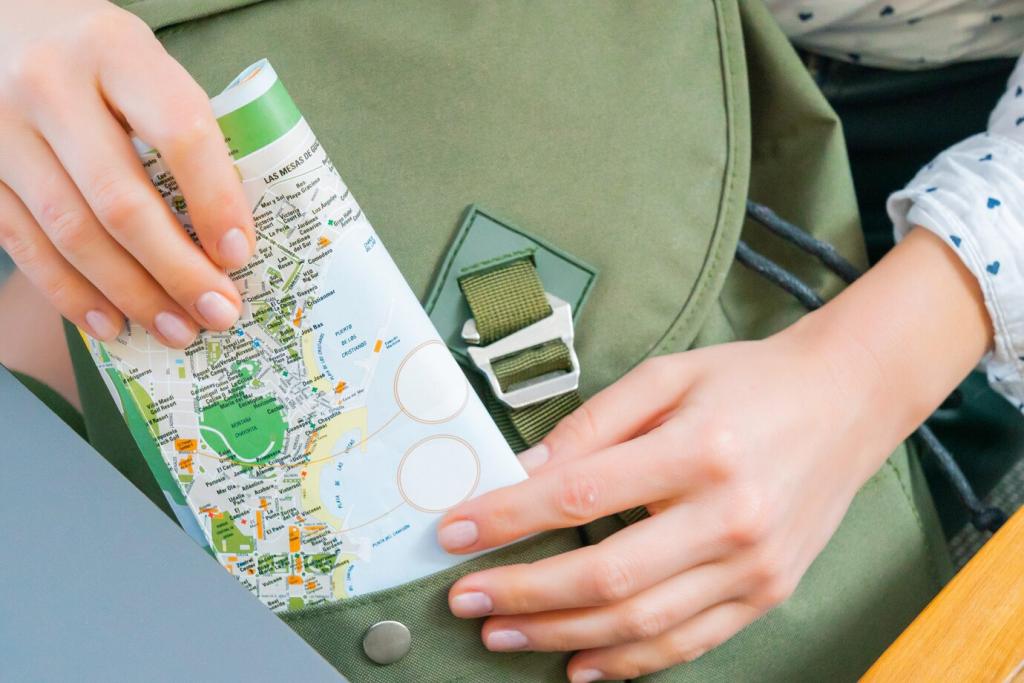Chosen theme: Optimizing Travel: The Secrets to Effective Itinerary Creation. Welcome to a friendly, inspiring guide to planning trips that flow. Discover smart methods, true stories, and practical frameworks that help you save time, protect energy, and unlock more joy. Share your planning style, subscribe for fresh itinerary ideas, and join the conversation.
Start with Purpose: Set Intent Before You Set Alarms
Name Your North Star
Write one sentence that captures your trip’s main goal. A reader named Maya wrote, “Savor Rome’s history without rushing.” That single line shaped her days: she prioritized slow museum mornings, a guided forum walk, and lingering over espresso instead of frantic checklists.
Design for Pace, Not FOMO
A sustainable pace beats a bloated schedule. Choose fewer, deeper experiences and accept intentional gaps. When you build recovery into the plan, serendipity finds you. Post your ideal pace in comments: relaxed, steady, or ambitious—then we’ll offer sample day templates to match.
Invite Your Travel Companions’ Voices Early
Collect everyone’s top three non-negotiables on one page. Seeing overlaps reduces friction, and differences become easy swaps. Use a simple poll or shared note. Ask your group to vote, then subscribe for our printable one-page alignment sheet to kick off planning calmly.
Timeboxing That Feels Human
Plan three anchors (major sights), three pauses (meals or rests), and one wildcard (flex slot). It keeps momentum while preventing overload. Readers report fewer missed tickets and calmer evenings. Try it on your next day plan and share how it changed your energy.
Geography-First Planning: Map Before You Move
Draw neighborhoods and fill each with two to three anchors plus nearby cafés and parks. In Paris, a Left Bank day keeps you within walking distance of the Musée d’Orsay, Luxembourg Gardens, and Saint-Germain bites, saving hours and steps while amplifying atmosphere.
Geography-First Planning: Map Before You Move
Pick one anchor sight, then search for a 15-minute walking radius of supporting experiences. Radii reduce decision fatigue and simplify timing. Share your next anchor and we’ll crowdsource excellent within-radius ideas from readers who have walked those streets recently.



Budget-Savvy without the Stress
Ask, “How much joy, learning, or connection do I get per hour?” A modestly priced, uncrowded gallery might outrank a famous, jammed venue. Rank your options by value-per-hour to avoid expensive disappointment and invest where memories multiply fast.
Budget-Savvy without the Stress
Book timed entries for high-demand sights and must-try restaurants. Leave lower-stakes activities open. This hybrid style protects the essentials while giving you space to react to weather, energy, and local tips. Comment with your must-book items for your next trip.
Data, Tools, and Tiny Systems That Keep You Sane
Check hour-by-hour forecasts and reshuffle outdoor anchors into clear windows. Maya moved her Colosseum visit forward by two hours to dodge rain, then used the shower to savor a café nearby. A simple weather check saved her day’s momentum.
Data, Tools, and Tiny Systems That Keep You Sane
Drop anchors, addresses, and confirmation numbers into a shared calendar. Notifications act like friendly guides. Add color codes for rest, transit, and food. Invite your companions and ask for comments so small issues surface before they become big detours.
Data, Tools, and Tiny Systems That Keep You Sane
Create a packing checklist template, a currency cheat sheet, and a reusable day-plan format. Repetition builds calm. Keep quick notes on opening hours, local holidays, and tipping norms. Post your best template and we’ll share community refinements in next week’s issue.
Energy Management: Plan for the Human, Not the Robot
Leave at least twenty percent of the day unscheduled. That margin absorbs delays and offers space for recovery after big sights. Readers who adopt this rule report fewer conflicts, more laughter, and a sense that the trip finally breathes with them.


Energy Management: Plan for the Human, Not the Robot
Plan meals near your anchors and schedule short movement breaks after long transits. A ten-minute walk resets mood and focus. Pack a small snack window between activities to stabilize energy. Comment with your go-to travel snack that keeps you steady.
Flexibility by Design: Plans That Bend, Not Break
Prewrite simple rules: “If it rains, museum first; if lines are long, café break; if energy dips, park bench.” These scripts reduce decision pressure. Post your top if–then rule and inspire someone else’s smoother day.
Flexibility by Design: Plans That Bend, Not Break
Add one small experiment daily: a local bakery blind pick, a side street detour, or a conversation prompt. Micro-experiments turn buffers into stories. Readers report these tiny bets often become their favorite travel memories—cheap, cheerful, and deeply personal.


